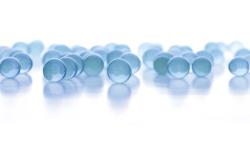
OR WAIT null SECS
- About Us
- Advertise
- Editorial Information
- Contact Us
- Do Not Sell My Personal Information
- Privacy Policy
- Terms and Conditions
© 2024 MJH Life Sciences™ and BioPharm International. All rights reserved.
Choosing an Expression System
A Q&A with Alan Shaw of Vaxinnate. This article is part of a special section on expression systems.
BioPharm: Commercial manufacturers tend to use only a few cell types for protein production, usually Chinese Hamster Ovary (CHO) cells or Escherichia Coli (E. Coli). Why have these cell lines been so widely adopted?
Alan Shaw
Shaw: Some cell lines or cell substrates are better adapted for one type of product as opposed to another. The great thing about CHO cells is that they've been around for a long time, they're well characterized and people have fine-tuned them in terms of media development, cell propagation systems, and cell carrier systems. All this work has been in the interest of making ever greater yields of proteins, typically monoclonal antibodies, in mammalian cells where you need to make products that are properly folded and glycosylated. That's been one of the main drivers for using CHO cells. There are lots of other cell lines that people use for various other applications.
BioPharm: In discovery, do you tend to see more variety in the types of cells that are used?
Shaw: What you do in discovery winds up usually appearing in the finished product. That's one of the reasons why when you're developing something, whether it's a vaccine or a monoclonal antibody, you need to think carefully about what you use as a vehicle for production. It's painful to get halfway into the development pathway and change your mind, because you have to go back and start from scratch. The decisions you make early on in the program color what happens later.
BioPharm: Are CHO cells and E. Coli adequate for the needs of today's developers?
Shaw: They're adequate for many things, but not everything. There are dozens of cell substrates out there that have been developed over the years, in many cases for custom applications. As an example, there's a new cell line made out of Muscovy duck embryo cells as a means for growing live viruses such as measles and mumps, which are typically grown on chick embryo cells. Duck genetics are somewhat advantageous, as some unwanted genetic elements are absent. Another good example is Per C.6 cells, developed by Crucell in the late 1980s. These are human retinoblastoma cells that have been specifically transfected with two adenovirus genes, E1 and E2, so that disabled adenoviruses that lack E1 and E2 can be grown on PerC.6 cells in a well-controlled way. PerC.6 cells have utility for other things too, but they were created to support the well-controlled growth of adneoviruses in the presence of helper trans E1 and E2 genes. It's a big industry, and people come up with custom applications to fit the need of the product that they're working on—that's how we end up with different cell lines.
Getting back to E.Coli, it's still the workhorse of the industry, simply because of its simplicity and productivity. At Vaxinnate, we're working on a new type of influenza vaccine where we make the antigen (the hemagglutanin part), in E Coli. It's coupled to a toll-like receptor ligand, flagellin, which is the ligand for tlr5, one ends up with a chimeric protein that's half flu virus and half bacterial flagellin. The techniques are based on standard 1980s molecular biology, but it's very productive. We get around 100–400 million doses of flu vaccine out of a single 1000-L fermentation run, and it takes 6 days to do it. If there is a pandemic, this is a very useful system to have.
BioPharm: Is there a cost advantage to the readily available reagents and equipment to culture E. Coli?
Shaw: There's a vast array of tools that people have developed over the decades for E. Coli. There are all kinds of things one can take advantage of—a lot of them are in the public domain, and others can be licensed fairly inexpensively. It's still an attractive way to produce your product, if your product can be made in E. Coli. There are some things for which it just won't work, but that's why there are other cell lines.
BioPharm: For vaccine manufacturers just starting out, what should one consider when choosing a system?
Shaw: It really depends on what you're going to make. You look at the end product, and keep that in mind. We're not wedded to E Coli. We do use other cell systems when we need to, but most if not all of Vaxinnate's products are made in E Coli now. But when you set out on a program, it's important to think about the practicalities of the cell substrate or cell line that you're going to use to make your product. Different cell types or cell lines will be better at glycosylation or disulfide bond formation or secretion. There's now the ability to transfer enzymatic functions, such as N-glycosylation for example, from one organism to another. It's a matter of carefully considering the pros and cons of the various cell substrates and cell systems that are available for your product that you intend to make. These early stage decisions are important for the final product development.
Alan Shaw, PhD, chief scientific officer and chairman of the board, Vaxinnate



